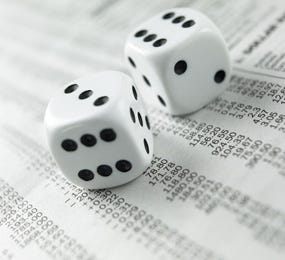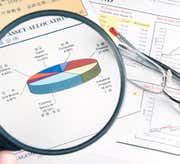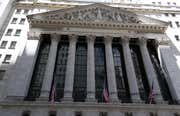|

|
The cash conversion cycle (CCC) measures the number of days a company's cash is tied up in the production and sales process of its operations and the benefit it derives from payment terms from its creditors. The shorter this cycle, the more liquid the company's working capital position is. The CCC is also known as the "cash" or "operating" cycle.
The calculation
(Days inventory outstanding + days sales outstanding) – days payables outstanding
-
Days inventory outstanding is a measurement of how long it takes to convert the company’s outstanding inventory into cash. This metric is calculated by dividing the company’s average inventory by its cost of sales per day.
-
Days sales outstanding is calculated by dividing the average accounts receivable figure by the net sales per day figure. DSO provides an estimate of how long it takes the company to collect on sales that go into the company’s accounts receivable.
-
Days payables outstanding is calculated by dividing the company’s average accounts payable figure by its cost of sales per day. DPO provides an estimate of how long it takes the company to pay its suppliers.
Why the cash conversion cycle matters
The cash conversion cycle is vital for two reasons. First, it's an indicator of the company's efficiency in managing its important working capital assets; second, it provides a clear view of a company's ability to pay off its current liabilities.
The cash conversion cycle looks at how quickly the company turns its inventory into sales, and its sales into cash, which is then used to pay its suppliers for goods and services. While the quick and current ratios are more often mentioned in financial reporting, investors would be well-advised to look at this metric as a measurement of the true liquidity of a company.
The longer that inventory is on hand, the longer it takes to collect accounts receivables. Combined with a shorter duration for payments to the company's suppliers, this indicates that cash is being tied up in inventory, receivables and is being used more quickly to pay trade payables. If this situation becomes a trend, it will reduce, or squeeze, a company's available cash. Conversely, a positive trend in the cash conversion cycle will add to a company's liquidity.
By tracking the individual components of the CCC an investor can spot positive and negative trends in the company’s working capital management.
A shorter CCC means greater liquidity, which translates into less need to borrow, more opportunities to realize price discounts with cash purchases for raw materials and an increased capacity to fund the expansion of the business. Conversely, a longer CCC increases the company's cash needs.
Current and quick ratios vs. the CCC
The limitations mentioned in previous sections regarding the current and quick ratios as an indicator of a company’s true liquidity make a strong case for looking at the cash conversion cycle to analyze a company's working capital position.
-
 Investing
InvestingMeasuring Company Efficiency To Maximize Profits
Efficiency ratios can provide indications of profitability, shows how efficiently a company is being managed, utilizes its assets and handles liabilities. -
 Investing
InvestingHow to Evaluate a Company's Balance Sheet
Asset performance shows how what a company owes and owns affects its investment quality. -
 Investing
InvestingLiquidity Measurement Ratios
Learn about the current ratio, quick ratio, cash ratio and cash conversion cycle. -
 Investing
InvestingCash: Can A Company Have Too Much?
Cash is something companies love to have. But if they are not using it there could be problems. -
 Investing
InvestingCorporate Cash Flow: Understanding the Essentials
Tune out the accounting noise and see whether a company is generating the stuff it needs to sustain itself. Learn how to read the cash flow statement. -
 Investing
InvestingUseful Balance Sheet Metrics
These metrics can help you better understand the information found on balance sheets. -
 Investing
InvestingCash Flow on Steroids: Why Companies Cheat
Pressure to be the best can sometimes push corporations to cheat. Learn how they do it and how to spot it. -
 Investing
InvestingFinancial Ratios to Spot Companies Headed for Bankruptcy
Obtain information about specific financial ratios investors should monitor to get early warnings about companies potentially headed for bankruptcy. -
 Investing
InvestingThe 4 Stages of the Investor Emotion Cycle
Investors have an emotional counterpart to each of the four stages of the market cycle.


